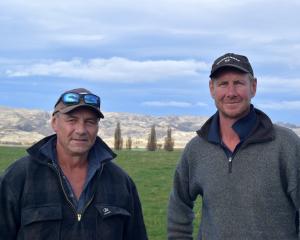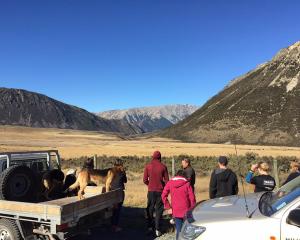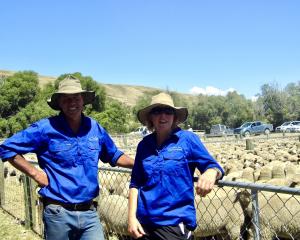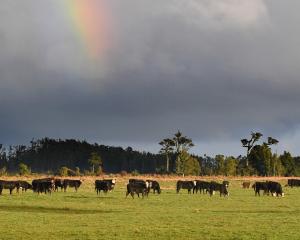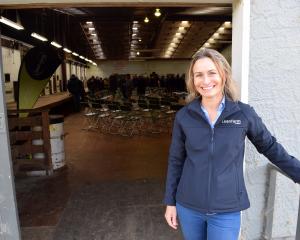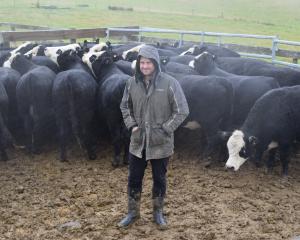
Beef + Lamb New Zealand (B+LNZ) is forecasting profits being down 54% to an average $62,600 per farm, based on a slow Chinese recovery and more Australian red meat entering the marketplace.
Lamb was sitting at a low $5.50 a kilogram on last week’s meat schedule compared with about $9/kg last season, while mutton is $2.30/kg.
Federated Farmers meat and wool vice chairman Simon Cameron said mutton prices were making it pretty tough on sheep farmers.
"Someone shared a photo on one of our group chats when a roast was $20 or $30 in Pak‘n’Save in the North Island and you think that’s great for the average Kiwi family who wants to shout the family for a nice roast meal, but you’ve got to feel for the farmer. The farmer has to produce that and cover the costs that go into it versus what he’s getting back and we all know the farmer isn’t getting $20 or $30 for the roast, he’s getting $5 for it probably."
Beef prices for bull on the schedule are about $5.20/kg, prime steer and heifer about $5.10/kg and prime cow $3.75/kg.
Mr Cameron said farmers such as him who had a higher beef ratio were not hit as hard, but their inputs, compliance and regulation costs were still high.
The South Westland farmer and his partner Courtney Landreth raise beef cattle in Haast.
Some calf sales had performed better than expected, including in Marlborough despite drought, he said.
"I do feel for the sheep guys. And wool is quite heartbreaking and in my opinion we live in this world where everybody is supposedly all about sustainability and traceability, well wool is so traceable now and it’s so sustainable yet you get zero reward for it. It’s costing guys to shear their sheep which is just so thankless when the general public is supposedly telling us what they want."
He said some farmers had decided not to put fertiliser on the hill to reduce costs for a year with the hope that there would be a turnaround with more moisture next season.
"A lot of people are just trying to mitigate what they can do.
"It’s a dry season on the East Coast obviously so a lot of people tried to unload stock early and prepare for that.
"I think that was great foresight by them and forecasts are showing some accuracy. But otherwise they just have to weather the storm."
High country, hard hill country, and South Island hill country farms are hardest hit with profitability because of their heavier reliance on sheep revenue.
B+LNZ’s mid season update confirms farmers face widespread cash losses in the sheep and beef sector for the 2023/24 financial year.
More lambs from a good spring are not enough to compensate for lower prices and high costs. Low profit is at a level unseen since the 1980s, except for during the Global Financial Crisis.
As a result, B+LNZ’s forecast for the annual weighted average of all classes of lamb is an estimated $6.51/kg carcass weight, down 12% on 2022-23 and 13% lower than the five-year average.
The average mutton price is an estimated $2.41/kg, down 34% on 2022–23 and 49% lower than the five-year average.
Export receipts for lamb are expected to be down 4.8% and mutton nearly 20% on last year.
Chief executive Sam McIvor said farmers were looking to maximise their income and take stock to heavier weights where feed allowed.
Relief from a fall in interest rates this season was uncertain, he said.
“Input costs remain stubbornly high, we know farmers are feeling it, many have already worked hard on cutting costs and my conversations indicate they’re leaving no stone unturned to find additional savings. This is especially true for farmers with relatively high debt levels.”
Positive trends identified by B+LNZ include better beef returns driven by United States demand as it rebuilds its herd after drought.
Beef is forecasted to average $5.15/kg for the season, which is 2.9% down on last year, but 2% higher than the five-year average.
Demand for lamb in Europe and the US is expected to continue for the rest of the season.
The Meat Industry Association says nearly $760million worth of red meat exported in January was down 8% from the same month a year ago.
Chief executive Sirma Karapeeva said the results reflected the ongoing volatility in global markets.
“Clearly, challenges remain for our red meat exporters. "This was the lowest January result since 2019. The main contributor to the drop was China, with exports down 21% year-on-year to $263m." However, overall exports to the United States were up 10% to $182m and to the UK by 34% to $38m.
The value of sheepmeat exports fell 9% to $305m and beef by 6% to $320m.



